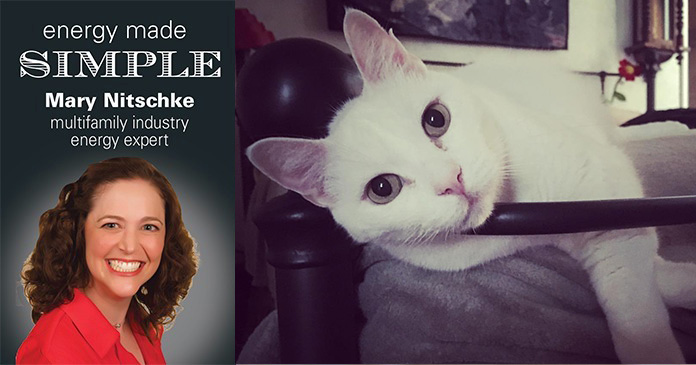I could be a James Bond villain; I have a white cat. His name is Buddy, and he is a magnificent mouser. He is very well behaved except that Buddy hates car rides (admittedly because the only time I put him in the car is to go to the vet, which he also protests very loudly). When we relocated from California to Texas for work, I concluded that spending twenty-five hours in the car with a cat screaming was not optimal. We would fly. It would possibly be embarrassing, but it would only be three and a half hours of yowling, which seemed the better option.
The trip was better than I imagined. After the screaming car ride to the airport in San Jose, Buddy was super quiet: silent at the airport, on the plane and even during the car ride from the airport to our temporary housing. Sadly, when we got to the apartment, I set up his litter box and bowls and let him out of the carrier in the bathroom next to his litter box. He instantly collapsed on the floor, rolled on his back, stuck his paws in the air and yowled for the next twenty minutes. I was embarrassed even though it was just us.
As an industry, I am hoping that we do better when we think about electrification in existing buildings. I recognize that if we simply substitute a like-for-exact-like when we replace equipment, it can materially change the electrical load on the in-unit panels. The necessary upgrades to the building electrical can add millions of dollars to a project. However, there are workarounds that are worth exploring.
Recently the Department of Energy shared that there are induction ranges on the market perfect for electrification retrofits. What impressed me about the ranges was that they were 120 volts (not the 240 volts that we have seen for decades). This means the range draws the same load as a hair dryer. The induction ranges also have a 5-kwh battery storage capacity built in. Typically, when you are firing up an appliance or even a light fixture, the startup has a greater energy draw than the run time. By utilizing the storage, the induction range is able to control the startup consumption so a standard, existing panel does not need to be upgraded. Additionally, if the building were to lose power due to a severe weather event, the battery storage would provide the apartment unit with one day of cooking, even when the power is out.
There are at least a couple of induction ranges on the market that have these capabilities. Although these appliances are currently more expensive per unit than a gas range, if you must electrify for any reason, they are much more cost effective. When taking the additional electrical work typically required into consideration, they can bring the cost down by millions.
Also, as we focus increasingly on healthy buildings, the elimination of natural gas combustion in the units reduces carbon monoxide and improves indoor air-quality, giving our residents an even better place to live.
The point is, let us think differently about where we are, and where we are going. We do not have to tear down and start over or overspend to see no upside. We do not have to lose our minds like Buddy because something is different; we can adapt, move forward, and see the positive outcome.
















